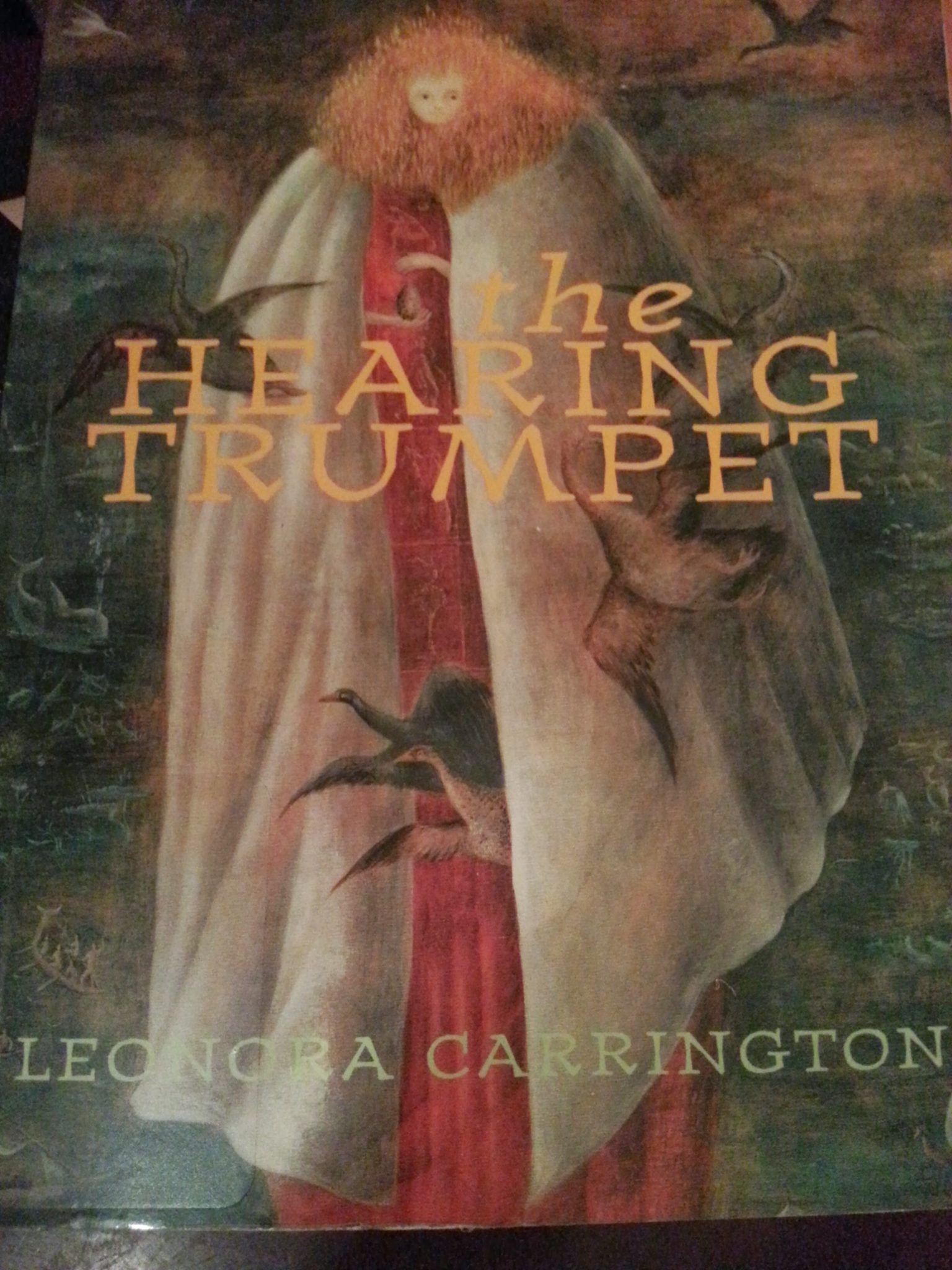This is part two of the story of my recent foray into Surrealist fiction. Read Part One here.
Suddenly I remembered – Leonora Carrington was Remedios Varo’s best friend! (Okay, I confess. I googled her.)
A long time ago in a galaxy far away, I became a member of the National Museum of Women in the Arts. I never made it to DC to visit the museum, but the member materials acquainted me with Varo, a Spanish surrealist who lived in Mexico. Her life was every bit as shockingly bohemian as that of her contemporary Frida Kahlo, but her art more closely resembled Hieronymus Bosch. According to my special-ordered copy of Janet Kaplan’s biography of Varo, she and Carrington
established an association between women’s traditional roles and magical acts of transformation…stimulated by the Surrealist belief in ‘occultation of the Marvelous’ and by wide reading in witchcraft, alchemy, sorcery, Tarot, and magic.
They collaborated on plays, constructed elaborate hats, and victimized their famous art world friends with performance art/pranks that sometimes made their way into each other’s painting and writing.
The Hearing Trumpet
The Hearing Trumpet was published the year I was born. Outside of Kaplan’s biography of Varo, I had never heard of it. In the more than fifteen years since my discovery of Varo’s painting, I had forgotten that it even existed until I read that review of Sjón’s Whispering Muse.
The following Saturday morning I took the kids to the library; it’s a weekly ritual. On the way to the books on hold section, there is a themed display shelf that changes every week. This time it was “Things You Might Have Missed.” Right in the center was a paperback copy of The Hearing Trumpet with one of Carrington’s distinctive paintings on the cover.
Book Review
The protagonist of The Hearing Trumpet, Mrs. Leatherby, is quite obviously Carrington herself, despite being 92 years old and sporting a small beard. Her best friend Carmella is an obvious proxy for Varo, even sharing Varo’s unusual habit of writing letters to strangers pulled from a phone book.
The first two thirds of the book are delightful, full of witty observations from an eccentric and cantankerous old woman whose mind wanders, “but never further than I want it to.” Her mind wanders to delightful places, and I couldn’t help thinking that I would love to sit and chat with such an interesting old lady, if only she had any teeth and wasn’t stone deaf. I quoted her endlessly on Twitter the whole time I was reading.
https://twitter.com/gemmadeetweet/status/414608757990367232
Things get a little weird when Leatherby gets sent to an old age home for crones. Each old lady lives in a private concrete folly in the garden. Leatherby lives in a small lighthouse, and is grateful to be spared the home of the Marquise, who had to climb a ladder to get inside the red toadstool with yellow spots.
The Surrealist elements multiply as the story progresses. It starts as the story of a dotty old woman banished to an institution by an unfeeling family. It ends with the death of civilization. The poles are reversed and the sun ceases to rise, triggering a new ice age. The world, tipped on its side, is left to be repopulated by cats, werewolves, bees, and goats.
Occult Surrealism
Once the occult elements that preoccupied Carrington take over, the final third of the story risks becoming tiresome to anyone who’s not into witchcraft, alchemy, and Tarot. But Carrington has not inhabited the toadstool herself; behind the surreal imagery is a conventional narrative structure. Although creatively appropriated, her symbolic lexicon with its kitchens, towers, and alchemical red/white/black color scheme, is fairly accessible. If you’re having trouble, just about any gender studies major, practicing Wiccan, or Finnish metalhead can help you out.
Carrington’s inversion of the Holy Grail myth, with its battle between Christian paternalism and the deep magic of primitive feminine theologies represented by St. Barbara of Tartarus may have been shocking in 1970s Mexico, but it’s the stuff of Dan Brown bestsellers today.
Still, bestsellers today are trapped in the logical language of codes and rule-based systems. Carrington’s irreverent celebration of the feminine is both passionate and perverse, unregulated by institutions or common sense.
A Hearing Trumpet for the Whispering Muse
Although contemporary, Sjón is not a bestseller, at least not in English. The Whispering Muse is no pseudo-historical puzzle game. In The Whispering Muse, Sjón shares Carrington’s nested box structure. Both include an element of the battle of the sexes in which sex is part of the answer. They even share the story of alchemical rebirth through boiling in a cauldron, but to a very different end. I assume there are parallels in the quest for the Golden Fleece and the quest for the Grail. But I can’t quite figure them out. Is Sjón telling the same story as Carrington but using different symbols? Or is he, as it appears in the witchcraft of the cauldron, making the opposite point? Maybe there is a whole other purpose I’m missing entirely. I haven’t even talked about the racial implications of Valdimar’s philosophy and the uneasy mystery of his activity during the war. Even with the Hearing Trumpet, I still can’t quite make out what the Whispering Muse is saying.
the effect of The Whispering Muse is prismatic: the reader feels that just beneath the surface there are strange and luminous things moving, leaving a series of small hidden detonations. –the independent






About the author